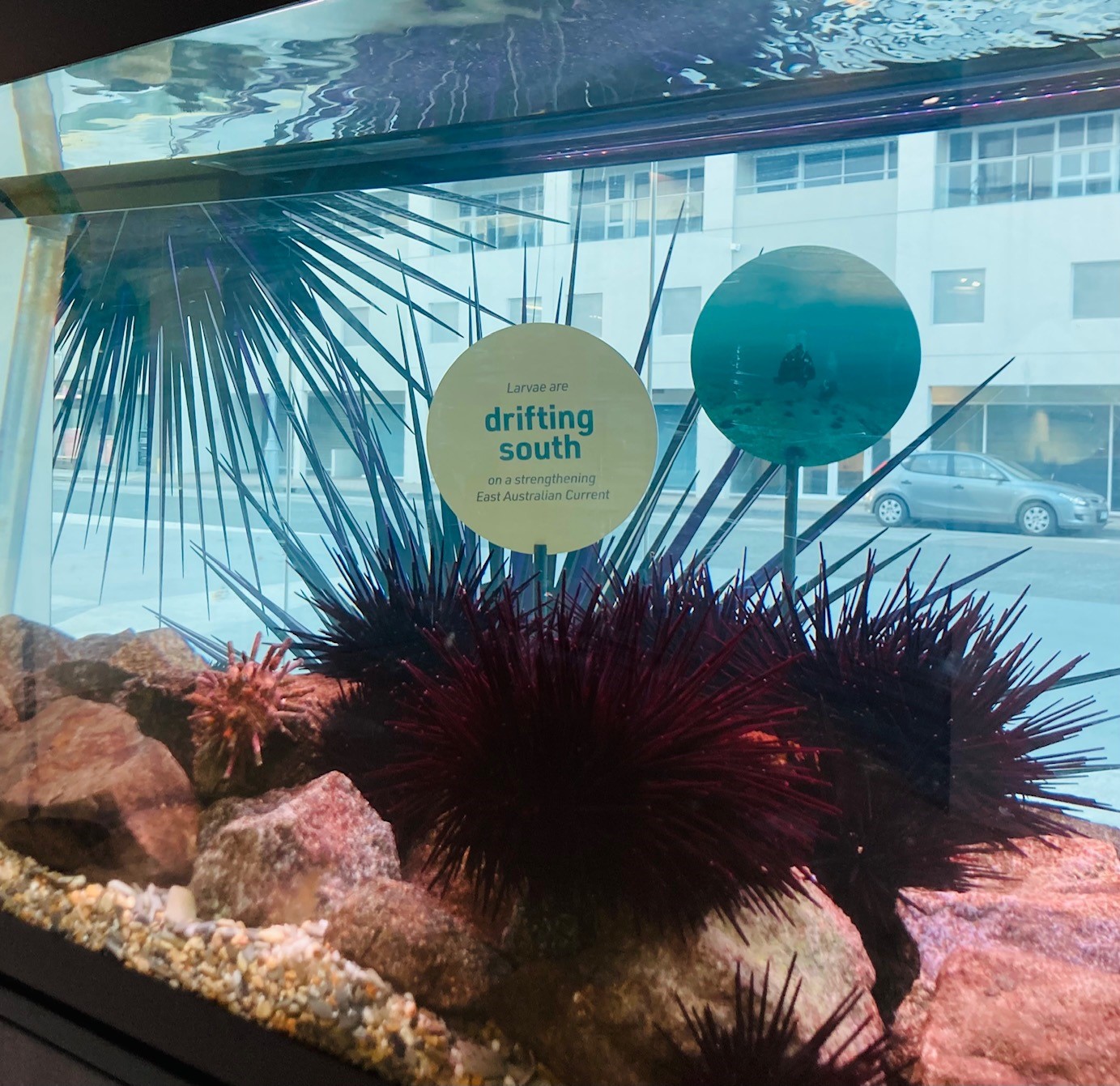
A new exhibition highlighting research into the invasive Longspined Sea Urchin Centrostephanus rodgersii was launched at the Institute for Marine and Antarctic Studies (IMAS) in Hobart last night.
The Urchins Beware exhibition at the IMAS Gallery in Battery Point is now open to the public. IMAS Research Fellow and urchin expert Dr John Keane said the free exhibition tells the story of the urchin invaders, including the problem, the science and the solution.
“Visitors will discover the history of urchins in Tasmania and understand what’s being done to control this invasive species,” Dr Keane said.
“This includes learning about our research into managing urchins and preventing urchin barrens from forming, which will allow our reefs to thrive again.”
Dr Keane said Longspined Sea Urchins were once rare outside NSW, but warming waters and a strengthening East Australian Current has seen them extend their range south, causing devastation to sections of Tasmania’s east coast reefs.
“They were first reported in the waters off St Helens in 1978 and now, 43 years later, there is an estimated population of 18 million on eastern Tasmanian reefs between larapuna/Eddystone Point and the Tasman peninsula,” Dr Keane said.
Longspined Sea Urchins can live for more than 40 years. They are voracious consumers of seaweeds and can turn healthy reefs into expansive urchin barrens.
Urchin barrens impact rocky reef species such as abalone, rock lobster and fish, which depend on reefs for habitat and food. Barrens have also resulted in the local loss of habitat for over 150 species living in east coast kelp beds.
IMAS scientists have been studying urchin ecology and their impacts on reefs and kelp beds for many years, and this has set an evidence-based foundation for managing and limiting the spread of urchins. Now research is turning its focus on urchin control mechanisms and how effective those controls are.
 “We’re surveying urchin populations and the extent of barrens, assessing predation by rock lobsters, evaluating targeted urchin culling and removal, and conducting wild harvest fishery assessments” Dr Keane said.
“We’re surveying urchin populations and the extent of barrens, assessing predation by rock lobsters, evaluating targeted urchin culling and removal, and conducting wild harvest fishery assessments” Dr Keane said.
With over 450 tonnes of Longspined Sea Urchins now harvested each year from Tasmania’s waters, IMAS scientists are monitoring the impact on the environment.
“In the heavily fished areas, we’re seeing kelps and seaweeds grow back – the ecosystem is showing signs of recovery” said Dr Keane said, who is also working with commercial urchin roe processors to improve the profitability of the industry.
“We’re investigating ways to use the urchin processing waste, powdered shells and gut, as an organic fertiliser in the agriculture sector. We hope that soon people will be able to apply this nutrient rich product on their home gardens,” he said.
Dr Keane thanked the Department of Primary Industries, Parks, Water and Environment (DPIPWE) and the Fisheries Research and Development Corporation (FRDC) for their funding contributions to IMAS urchin research. Discover more about our urchin research here
Where: IMAS Gallery, 20 Castray Esplanade, Battery Point
When: Visit our urchin exhibition page for current opening hours and to book your visit
Images:
Published 9 November 2021